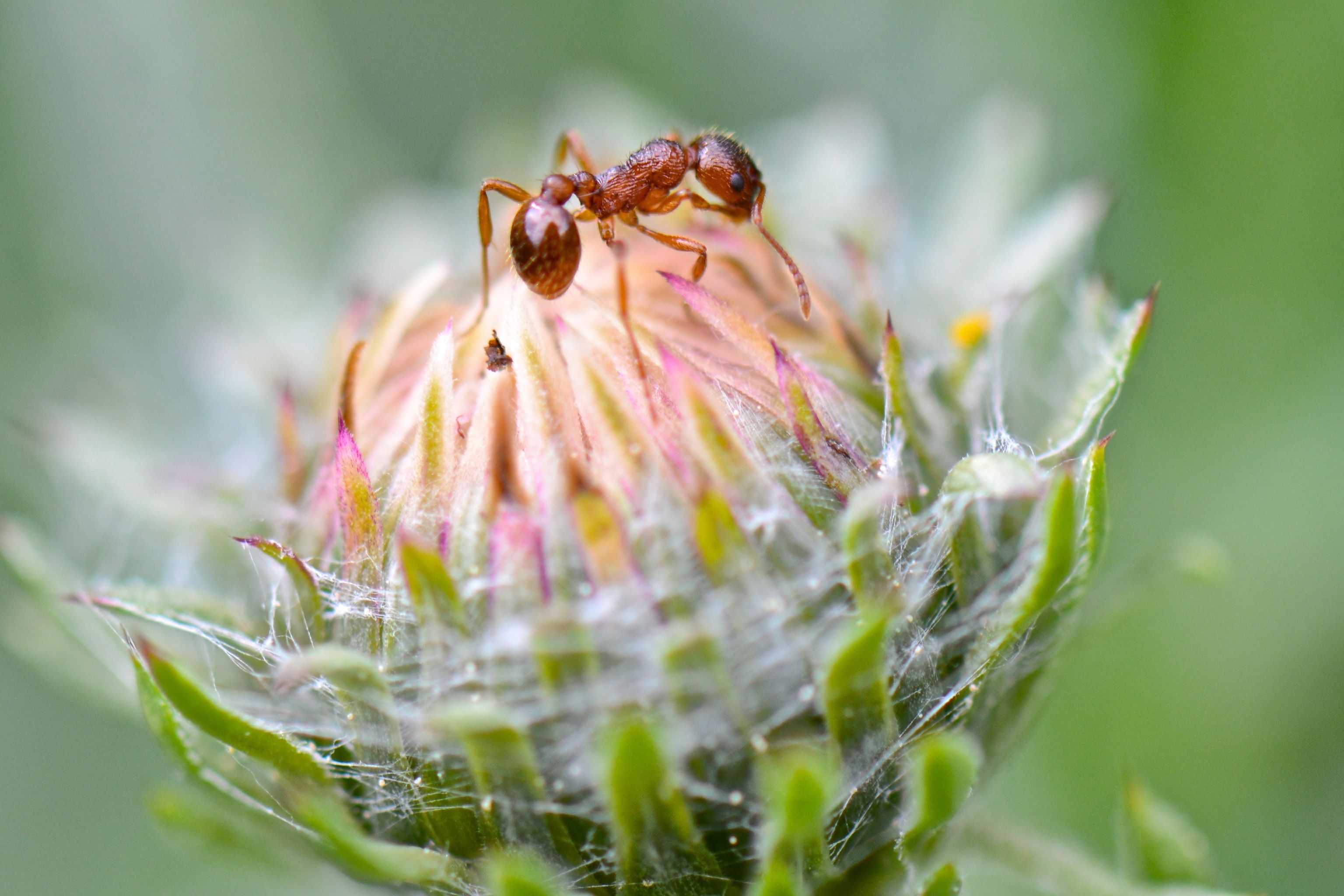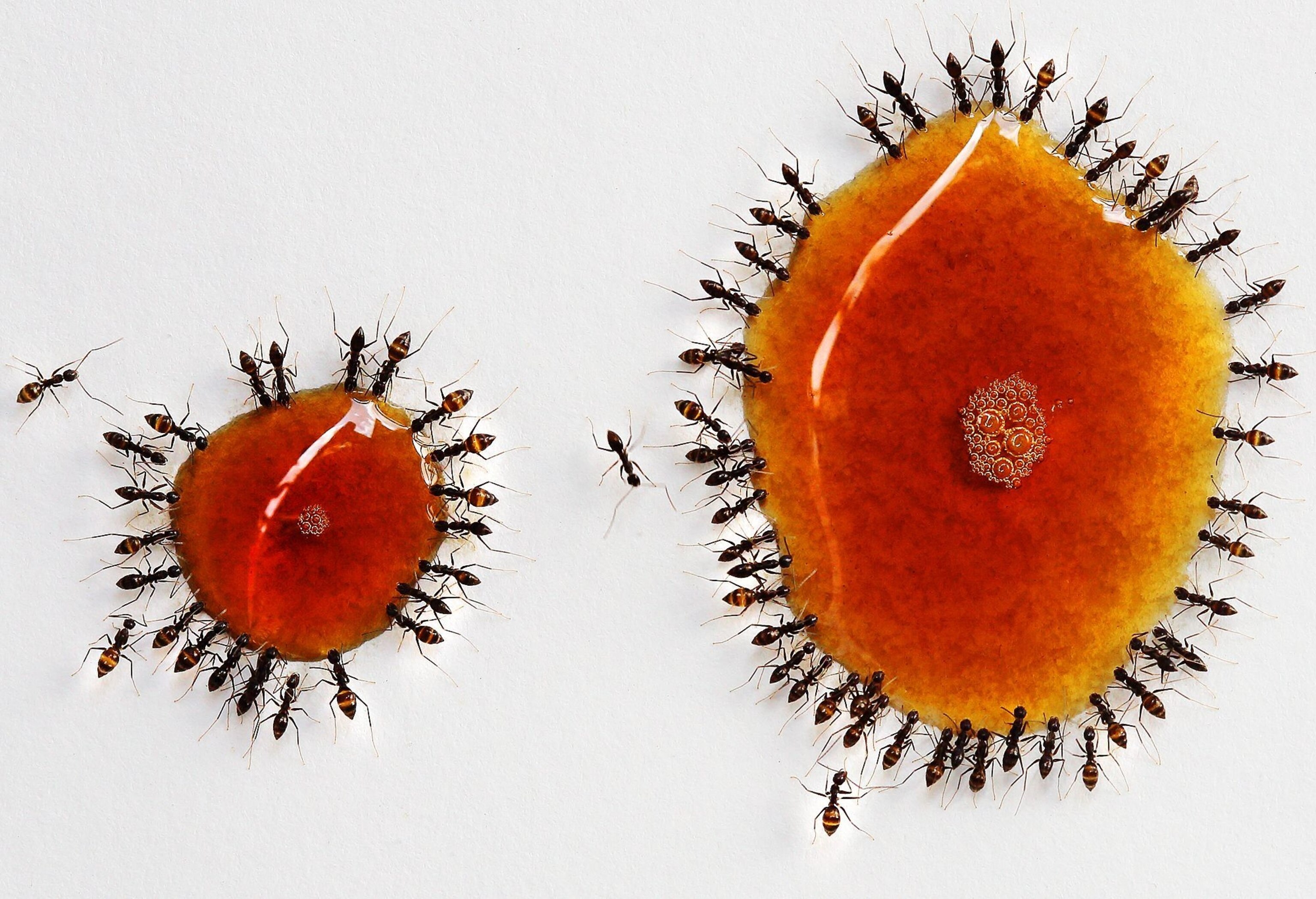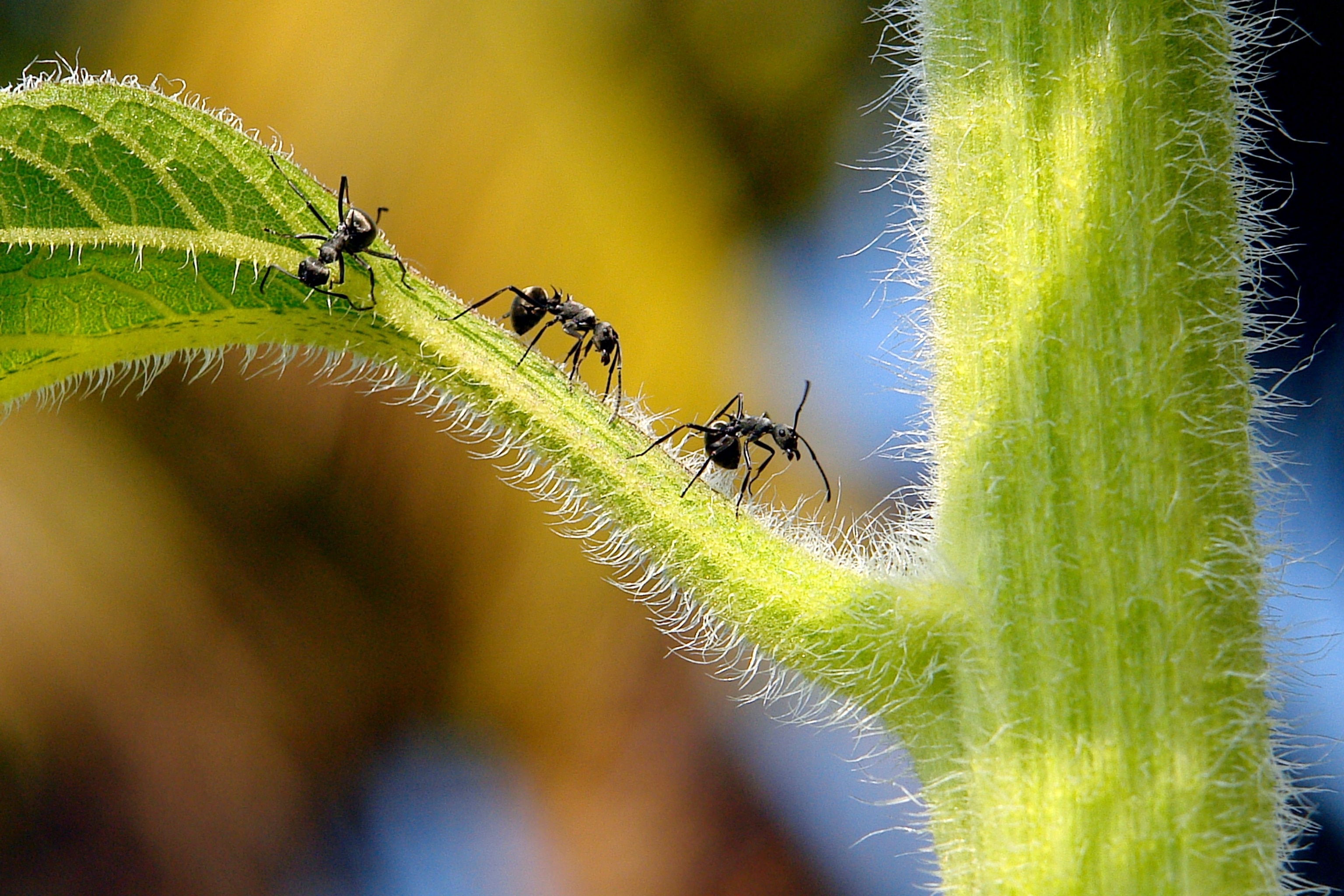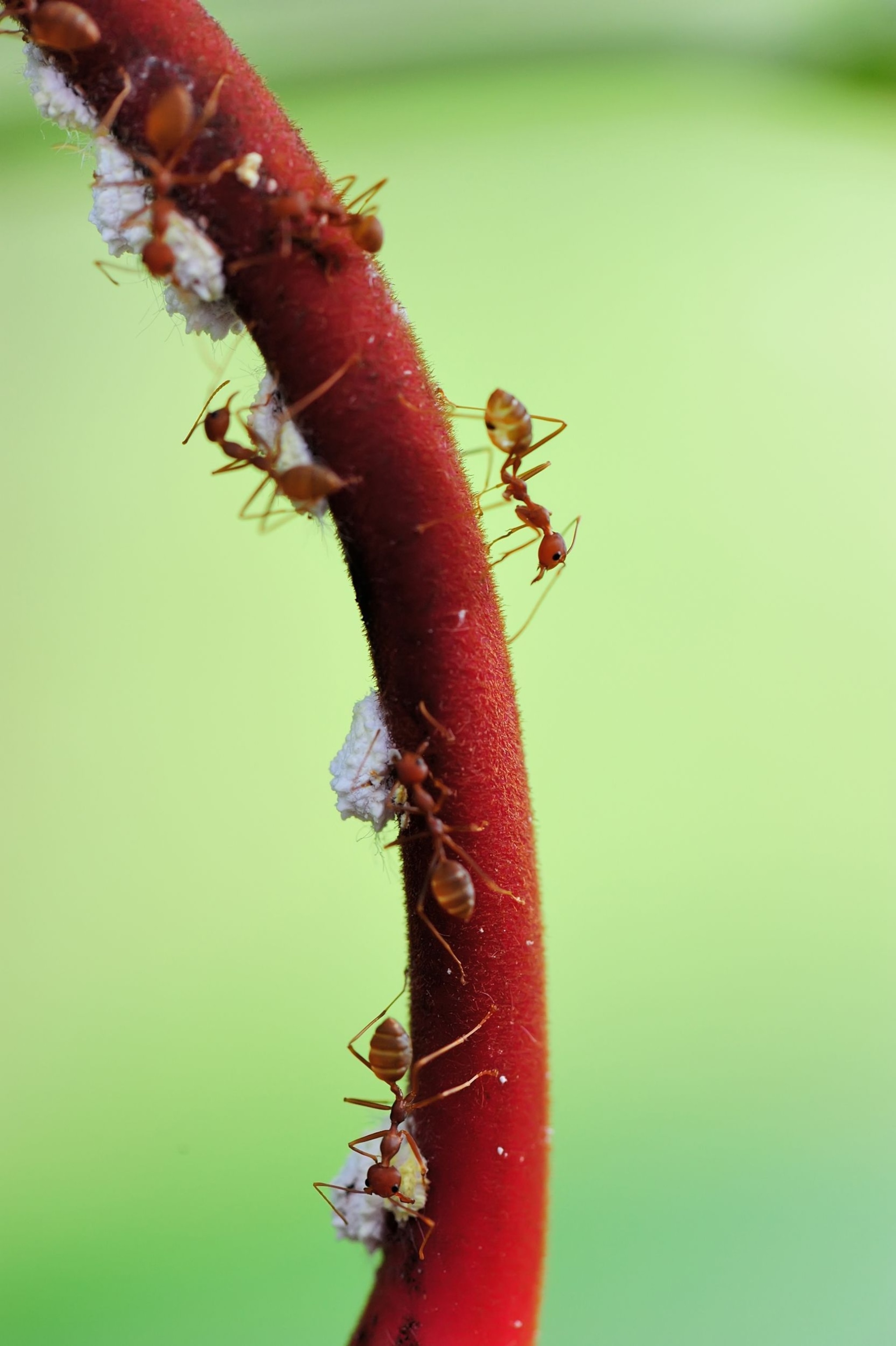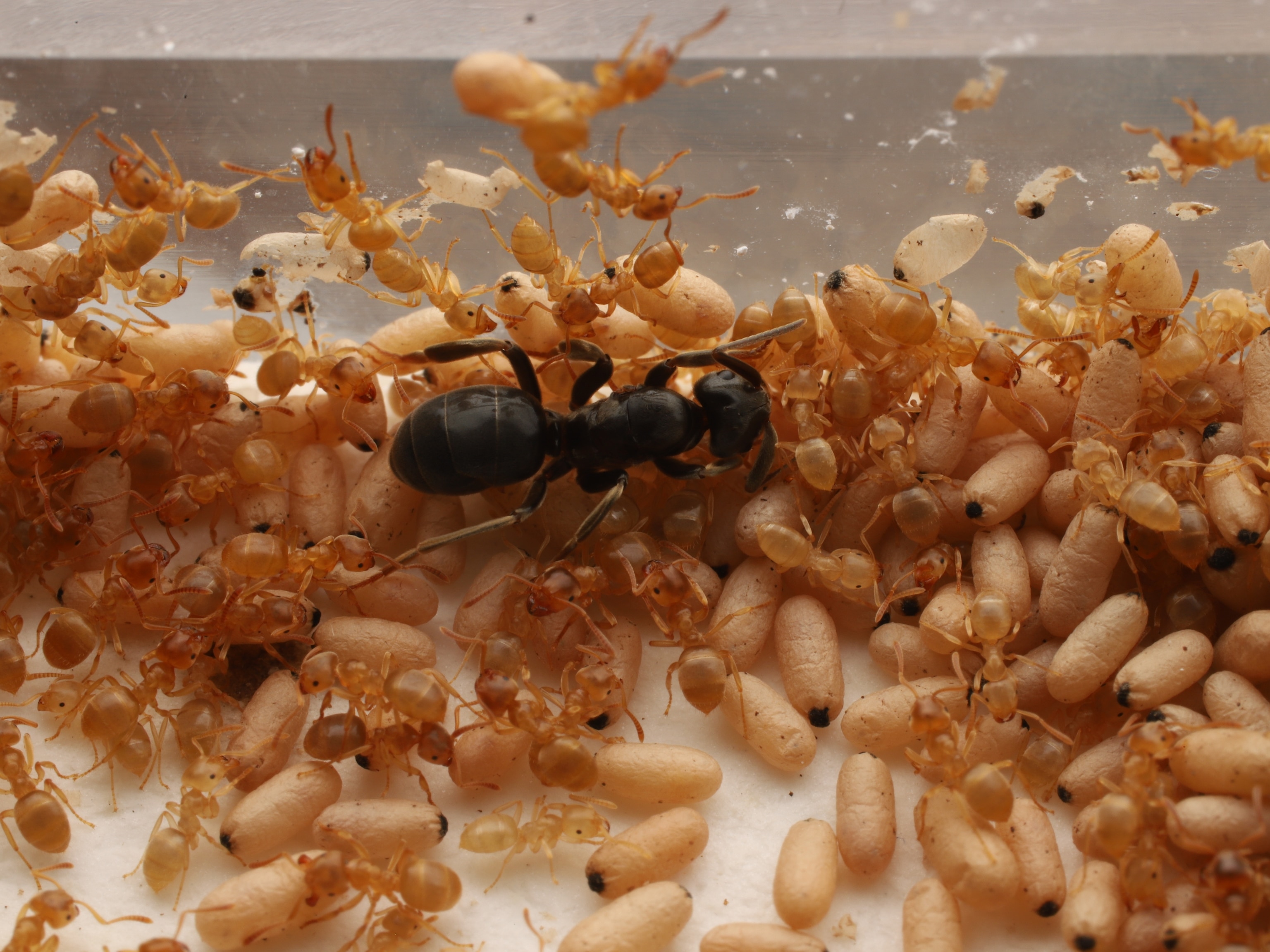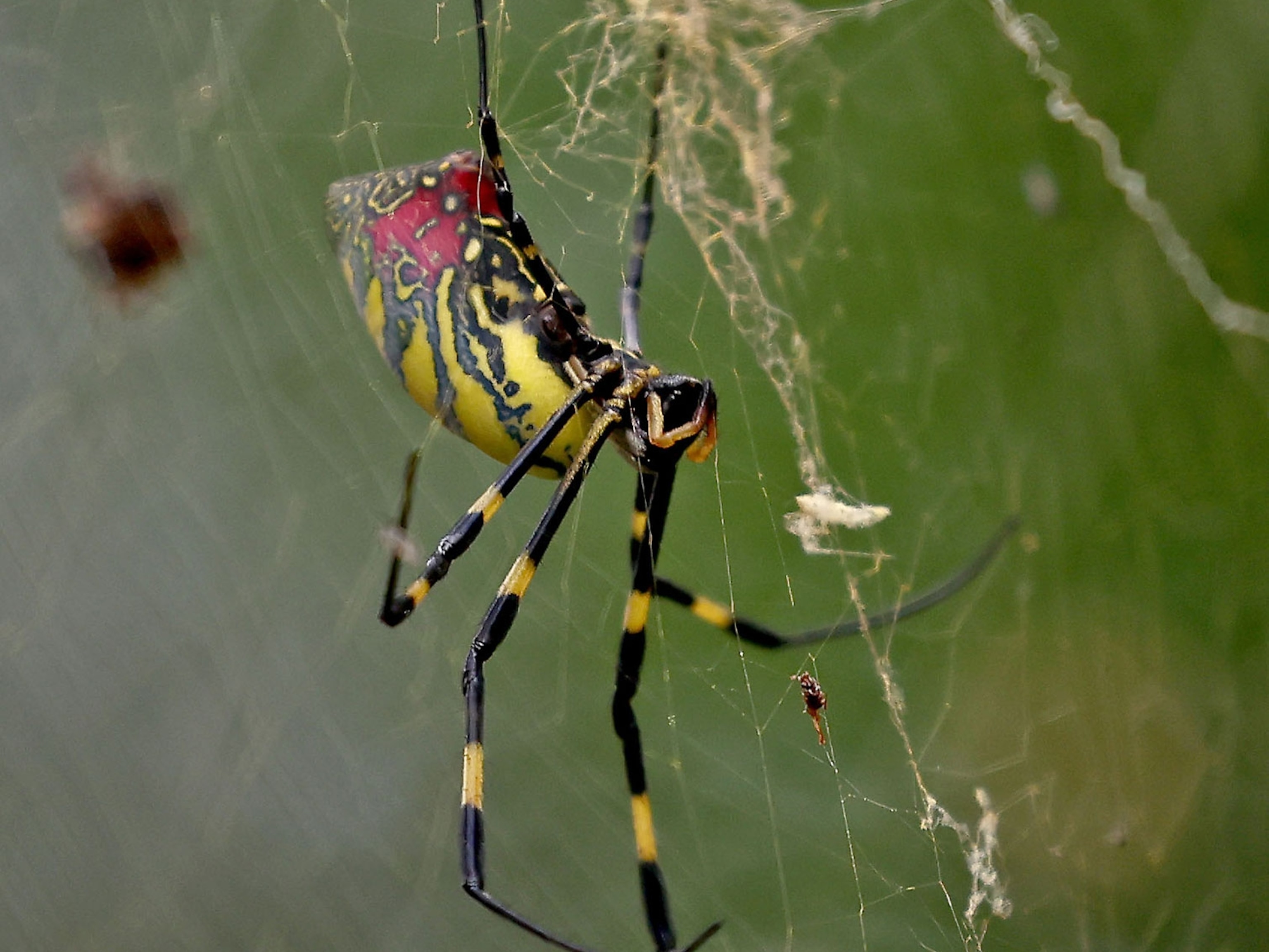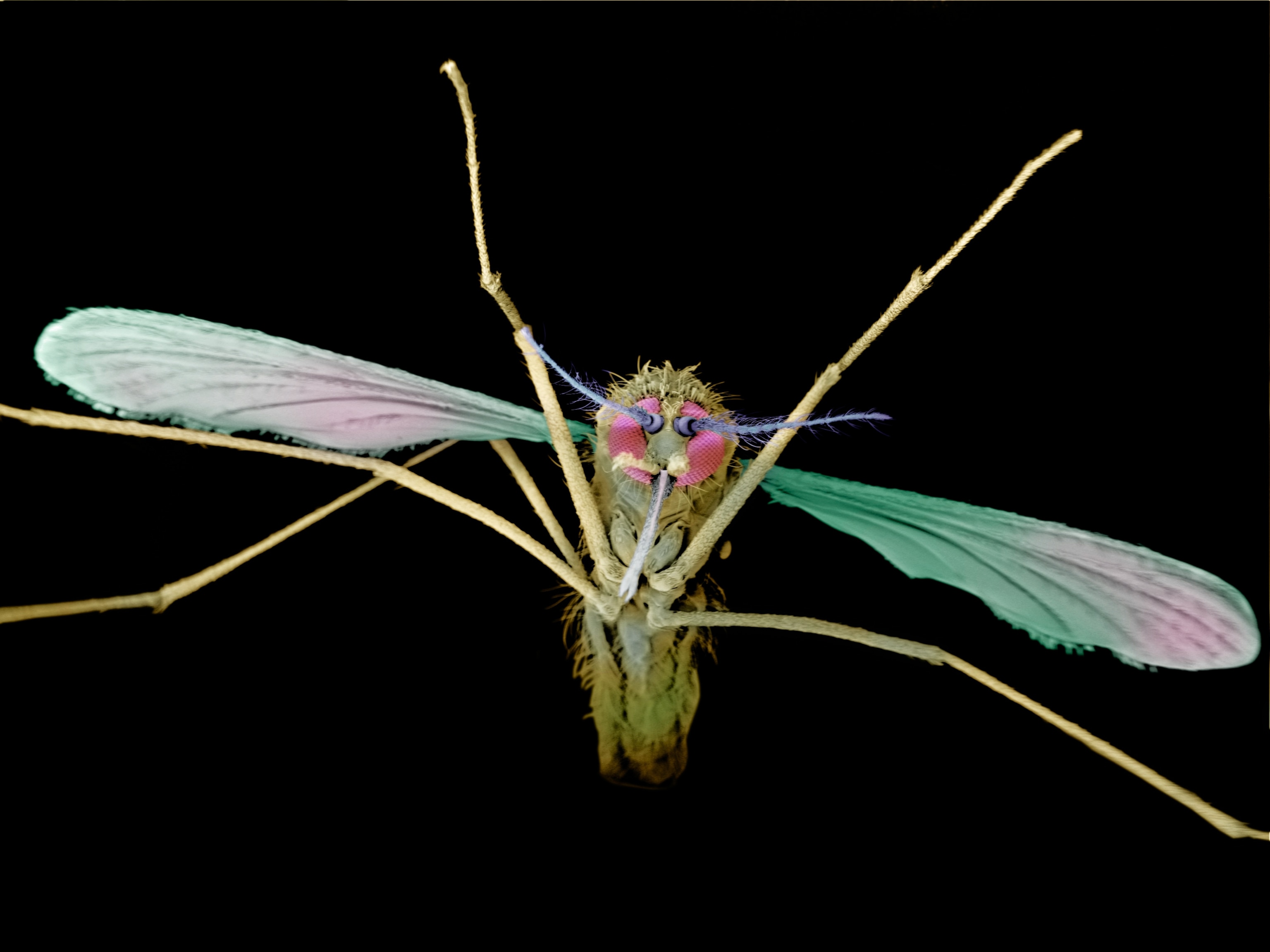Watch: Ants Use Giant Jaws to Catapult Out of Death Trap
Trap-jaw ants can escape predators' sand pits by using their powerful jaws to fling themselves away from danger, a new study finds.
The trap-jaw ant is famous for its super-strong mandibles, which can crush prey, handle eggs, defend nests from intruders, and even fling the insect into the air.
Now, scientists have found that these acrobatics help the tropical ants escape from predators, in particular the deadly antlion.
The ants deploy this strategy by angling their jaws downward, says study co-author Andrew Suarez, an ant expert at the University of Illinois in Urbana. (Also see "Ant With Lightning Jaws Makes World's Fastest Strike.")
"They produce so much force that when they strike [a part of the ground] that's relatively immovable, that force gets projected back on the ant and they go flying through the air," says Suarez, who received funding from National Geographic's Committee for Research and Exploration.
"It's like popcorn. They go bouncing everywhere."
And it turns out this behavior is good for more than entertaining entomologists. In fact, being able to bug out at a moment's notice can be the difference between life and death for these high-flying insects, according to a study published May 13 in PLOS ONE.
Star Wars Ready
If you've ever noticed inverted cones in the soil or sand, then you've seen the lair of a tiny monster—the lie-in-wait predator known as an antlion.
Antlions are actually the larvae of a dragonfly-like insect called a lacewing, notes study leader Fredrick Larabee, a Ph.D. candidate at the University of Illinois.
The pits the larvae make are basically traps for prey—especially ants. The antlion flings soil out of the hole in concentric circles, which creates an unstable slope. When an insect accidentally steps into the pit, the soil gives way and funnels the hapless victim toward the antlion's submerged jaws. (Related video: "Antlion Death Trap.")
"I don't know if George Lucas took his inspiration from antlions," says Larabee, "but the resemblance to the sarlacc in Return of the Jedi is uncanny."
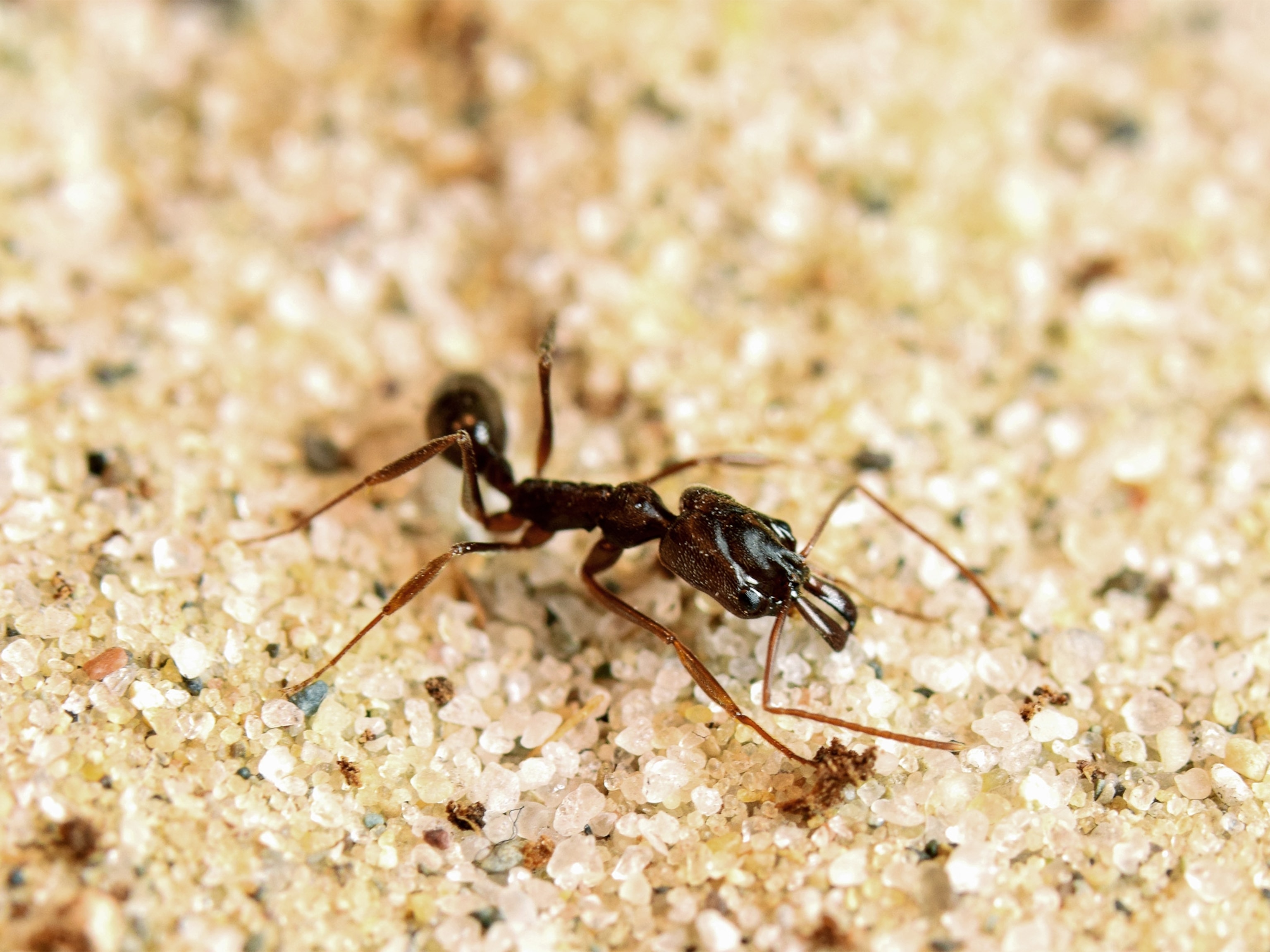
If an insect tries to escape from the pit, the antlion larva can even throw soil at it to further destabilize the wall and create a tiny avalanche. The antlion then uses its pincers to grab the prey and drag it below the surface.
Last-Ditch Efforts
In their laboratory experiments with antlions and sand pits, Larabee and Suarez observed that one species of trap-jaw ant (Odontomachus brunneus) was able to run so fast that it could escape the pit before the antlion latched on.
But when fast feet didn't work, these ants relied on their mandible-powered escape maneuver to avoid becoming lunch.
Despite the fact that the cascading sand is like a liquid, the trap-jaw ant is able to snap its jaws at the side of the pit so fast, it's just like hitting a hard surface, allowing the ants to bounce right out of the pit and get away, according to the scientists' observations, which included analyzing high-speed video of the behaviors.
In fact, when the scientists disabled some of the ants' jaws with glue, they had trouble escaping the antlions: The unobstructed ants were twice as likely to survive the pit as those with glued jaws.
Sheila Patek, a biologist at Duke University, notes it's possible the ants aren't purposefully trying to escape, but are instead simply lashing out at the antlion with their jaws, with the bounce as a side effect.
But Patek, who has taken many high-speed videos of the trap-jaw ant's escape mechanism, thinks that's unlikely.
"When the trap-jaw ant does its escape jumps, it really is different from when it's attacking," she says.


